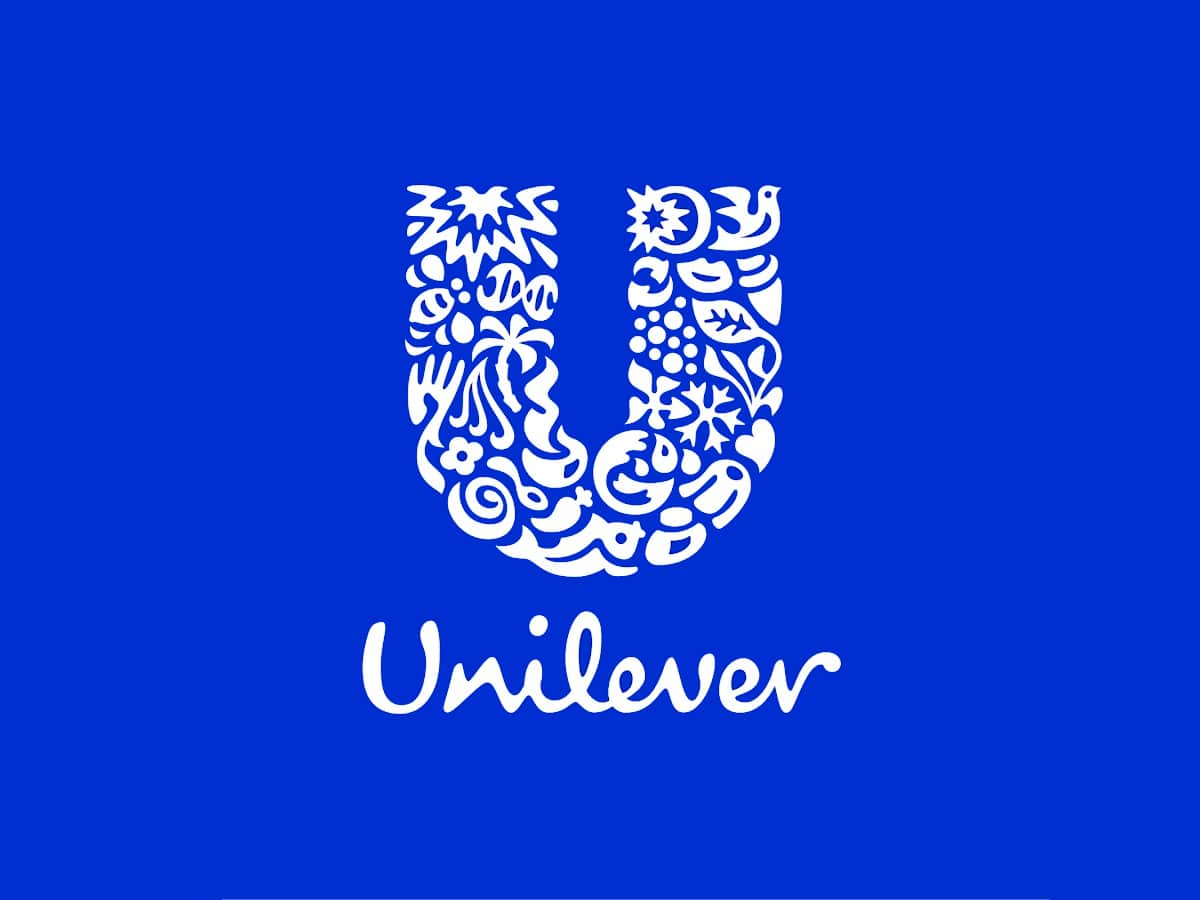
About us Unilever was created with the aim of achieving a sustainable life, and that this life is common to all. With nearly 150 people around the world, more than 400 brand names in different countries, Unilever has become a global company with a global purpose.
Since its inception, the company has followed the same purpose, to spread cleanliness and bring it closer to all people. Currently, as we have mentioned, they have more than 400 brands and that same objective is what drives them to continue working. In this post we will talk about the history and evolution of Unilever.
With a full awareness of the environment, only looking for the best, doing good for our planet earth and the society that lives on it. Through their products, they seek that improvement we are talking about.
Unilever's history

El The beginning of this company dates back to the beginning of the XNUMXth century in Europe. It all starts when two Dutch family-owned margarine companies that exported to the UK merge. The objective of this merger was to jointly increase sales.
On the other hand, another family company was starting the production of a new type of soap. At the controls of this company was William Lever.
It is about the middle of the XNUMXth century, when the history of the Unilever company really begins to emerge. The two margarine companies that had merged created Margarine Unie. A couple of years later, this margarine company joins the soap company we were talking about earlier. This merger between Margarine Unie and Lever, resulting in the formation of Unilever.
A few years later, in 1943, Unilever becomes the majority shareholder of the Frosted Food company and it is done, with the rights of a new way of preserving food, what we know today as freezing.
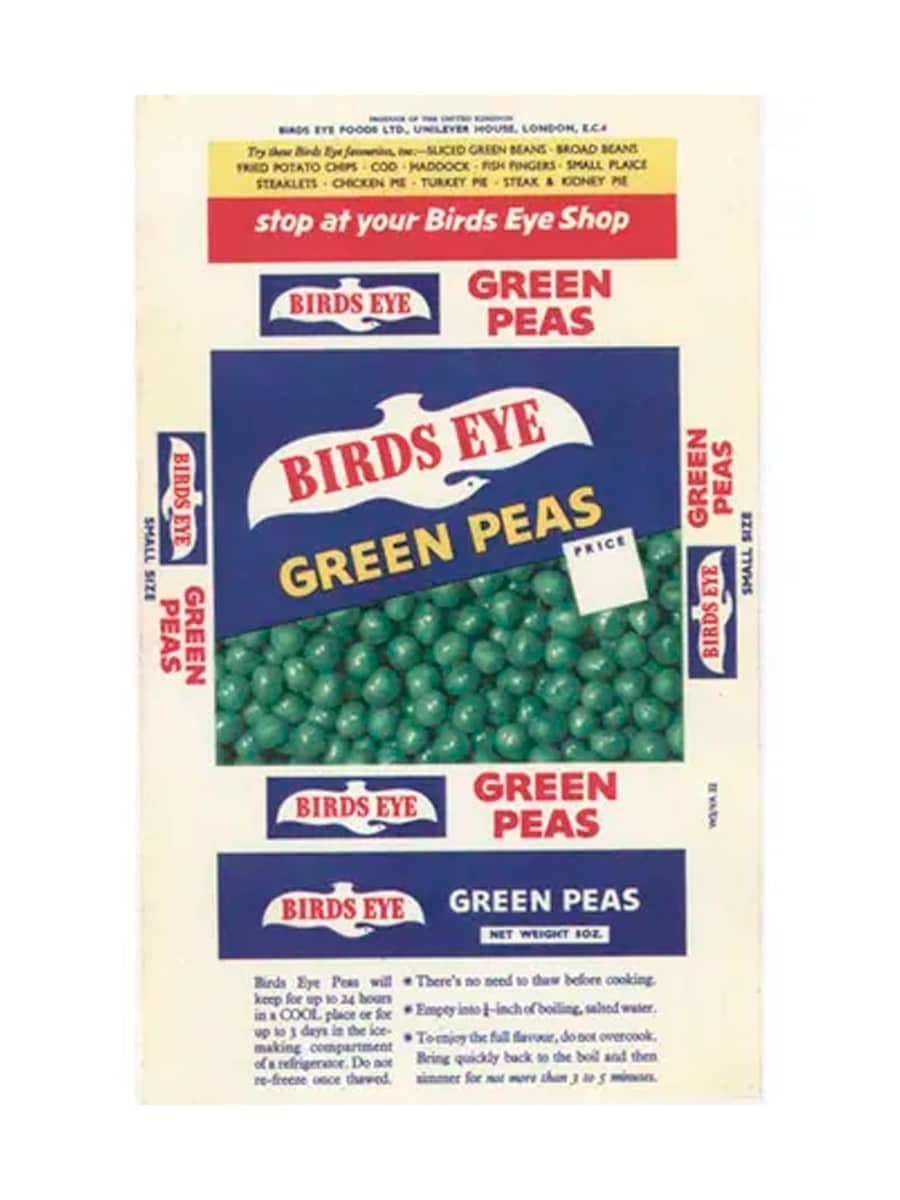
With the advent of World War II, the effects were not long in coming and the demand for products suffered a severe blow. This event leads Unilever to experience extremely difficult times. It is not until the late 40s, when it begins to resurface and expand.
In the 50s, the company launched novelties such as fish fingers on the food market. This novelty is a direct response to the great need that existed for nutritious food.
Years later, acquires different companies, with which it begins its expansion.
With the arrival of the oil crisis in 1973, Unilever suffered a setback again and stagnated, causing high inflation and falling sales.
Over time, the company resurfaces and acquires Frigo ice cream, and its products are already being marketed in 43 countries.
In the early 80s, the company Unilever ranks 26th largest company in the world. Likewise, its food offer expands and begins to focus on products for households and personal care.
With the Over the years, the company is increasingly aware of everything that has to do with the environment, and this leads it to create a sustainable agriculture program. This program was created by the environmental pressures that existed at the time, and the doubts of its consumers about the food chain.
In recent years, Unilever has been awarded the title of the world's leading supplier of consumer products.
History of the Unilever logo
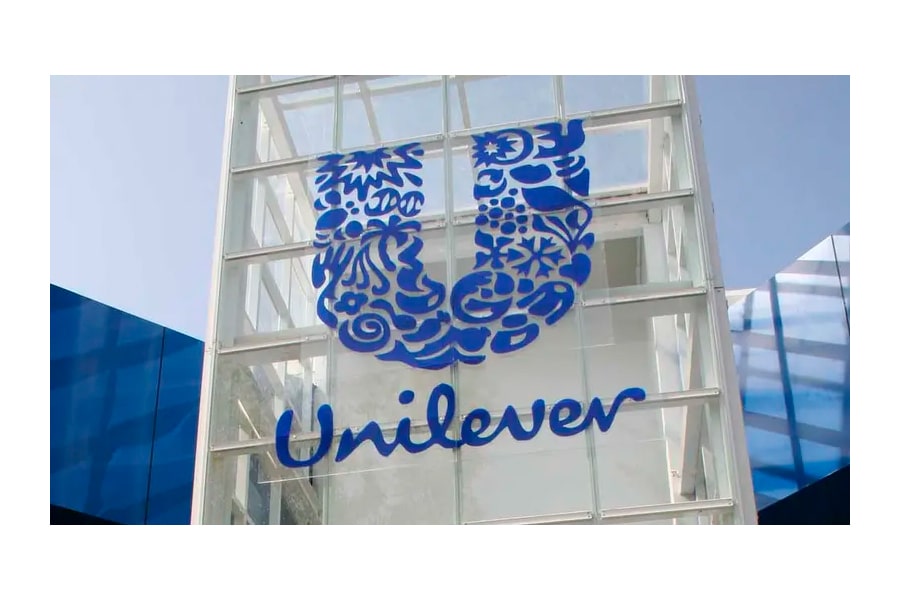
The company logo presents a U shape that we all know. This form consists of various icons and each of them is related to the company.
Logo 1967 to 2004
Although Unilever's history begins in the early XNUMXth century, it is not until 1967 when its first brand logo appears. This corporate identity only underwent a redesign in 2004.
That one company as important as Unilever, keep the same logo for 37 years is really impressive. Having this consistency in your corporate identity says a lot about your focus, stability, and quality.
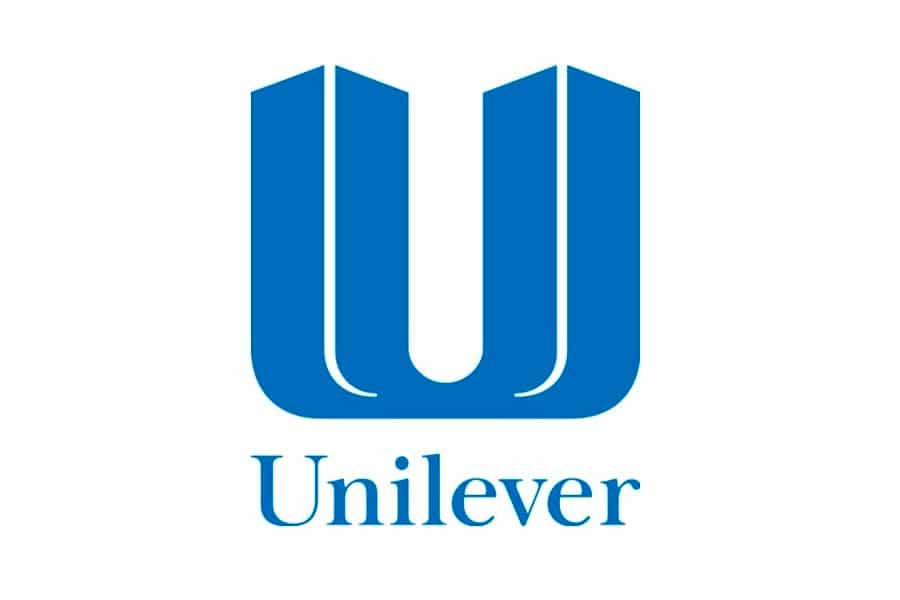
As we have said, the first Unilever logo appears in 1967. Until then, behind this company were the different logos of the companies that produced consumer products.
One of the most important decisions of that moment, was the create a brand image that would unite the different companies that Unilever contained.
The logo, matched the color blue and white. This color palette provides you with a fresh and nice appearance.
The design of the emblem was striking, it featured stylized U-shape, in which its ascending shafts ended in a point, giving the impression of being arrows. As for the vertical lines that run through the center of these poles, they show two large towers. What gives an aspect of stability and seriousness.
Speaking of the logo, the text, is composed of a typeface with serifs, which gives it an elegant style. In addition, said typography is subtly extended, which provides stability to the composition.
Logo 2004 to present
The company commissioned its redesign in 2004. The only thing that remained in the design of the new logo was the U shape.
For this design, it was use of negative spaces and 25 different elements were created that would be placed within said shape. Each of these icons represents the market segments where Unilever operates, in addition to the values of those companies.
We can see this logo today in any of the products that the company sells, as well as in advertising campaigns.
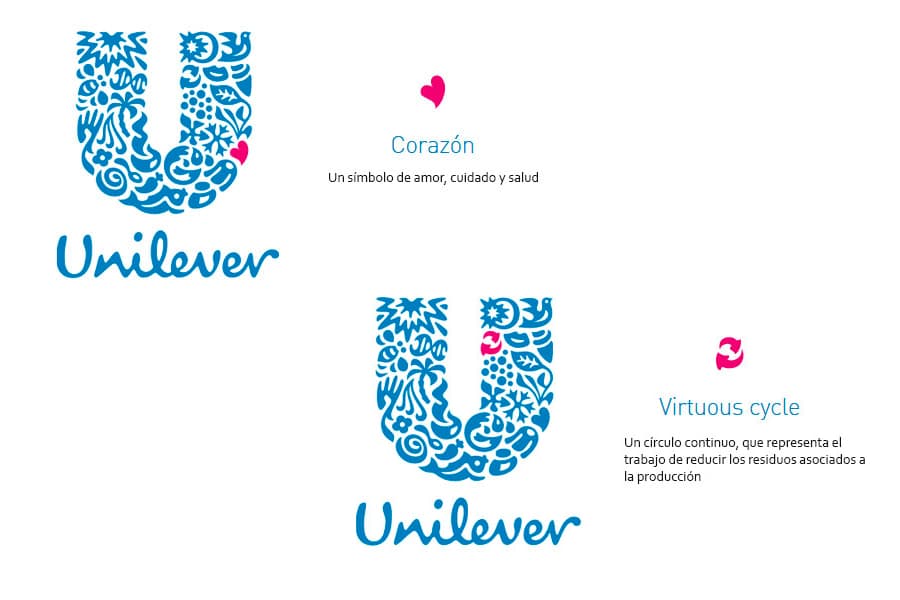
According to the Unilever website, each of these elements is related to a certain aspect of the company. Among them, we can find two arrows, as a recycling symbol, a heart alluding to love and many more.
Lee Coomber and Miles Newlyn, intellectual author the first and creative part the second, made a unique typography, customized for the brand.
El corporate color, has always been blue since its inception. But in 2004, a darker shade was used, giving it a more readable look.
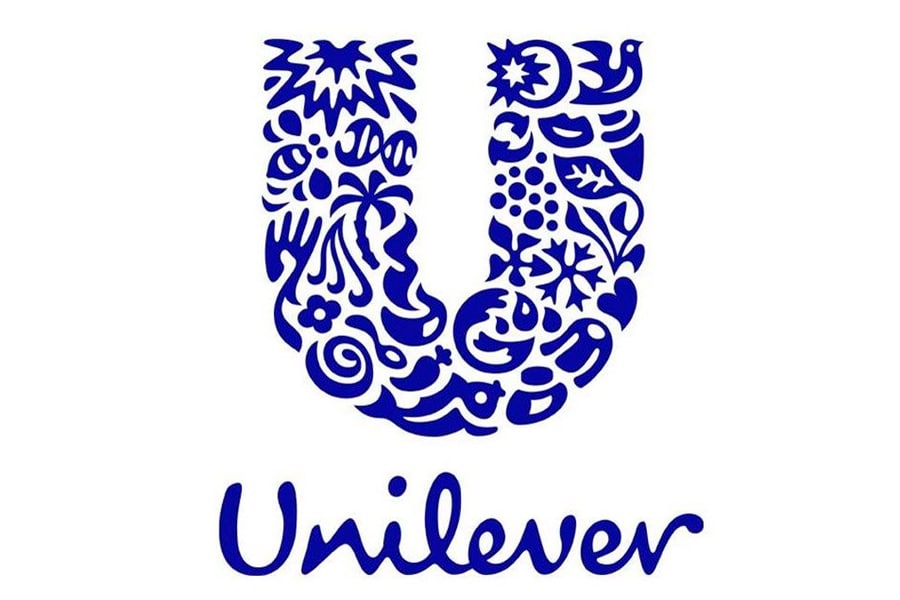
Unilever has become one of the most famous companies in the world, and is present in many countries around the world. A powerful brand that has managed both its business and its brand image correctly over time.